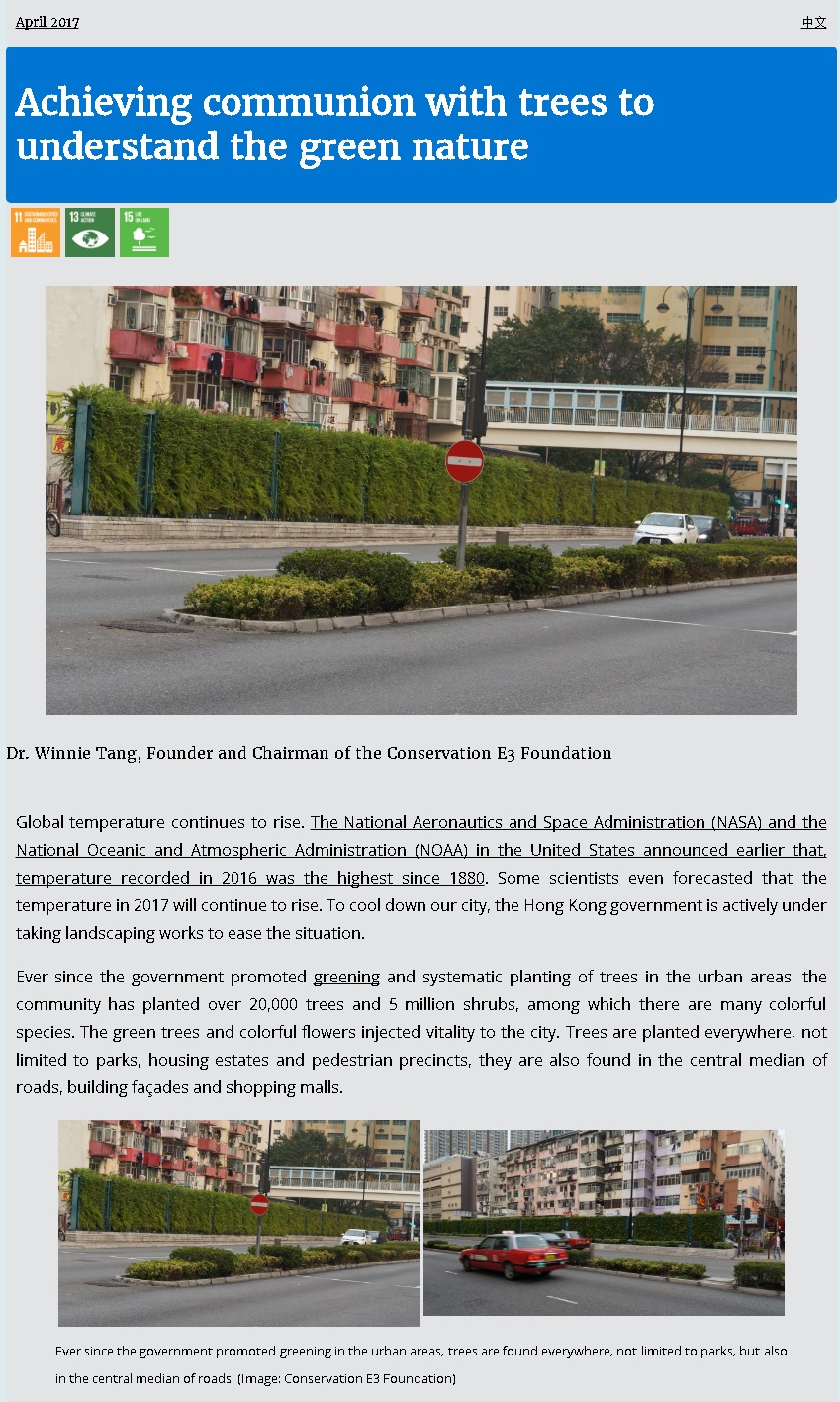網上版請按此

Achieving communion with trees to understand the green nature
Global temperature continues to rise. The National Aeronautics and Space Administration (NASA) and the National Oceanic and Atmospheric Administration (NOAA) in the United States announced earlier that, temperature recorded in 2016 was the highest since 1880. Some scientists even forecasted that the temperature in 2017 will continue to rise. To cool down our city, the Hong Kong government is actively under taking landscaping works to ease the situation.
Ever since the government promoted greening and systematic planting of trees in the urban areas, the community has planted over 20,000 trees and 5 million shrubs, among which there are many colorful species. The green trees and colorful flowers injected vitality to the city. Trees are planted everywhere, not limited to parks, housing estates and pedestrian precincts, they are also found in the central median of roads, building façades and shopping malls.
Trees are precious resource. It provides us with fresh air, water, fuel, fiber and inspiration. Like fresh air - just one large tree can supply enough oxygen for four people's daily consumption; a tree can absorb 22 kilograms of carbon per year. Trees produce hundreds of fruits and nuts. Food additives for making ice-cream, chewing gum and many other delicacies also come from trees. The number of wood and paper products consumed per person per year is equal to a tree of 30m tall, 46cm diameter. Meanwhile, trees can alleviate floods, even young trees can breathe out 230 liters of rainfall. One mature tree can reduce storm water by 150,000 liters each year, which is particularly important in tropical cities like Hong Kong where our paved areas like road blocks the natural path to water percolating into the ground. Therefore, it is important to be familiar with the special characteristic of the plants, in order to choose the right ones for each location.
Unfortunately, we still hear about cases tree abuses. Some time ago, several campers were annoyed by having been tripped over by some tree roots that they chopped down the tree. Also, there were hikers using small trees as support for warm-up exercise as it was appealing to them for being able to pull and curve the trees. There was also a bunch of mimosa being transplanted somewhere else and fenced off by railing because some children were injured after touching them accidentally . All these examples tell us that the current education of plant conservation is inadequate.
We have learnt the importance of trees and how to protect them since childhood. We should not pick their flowers and fruits to avoid damaging the trees as these acts may affect their growth. We do not barbeque or burn joss-sticks near trees to avoid the trees being smoked and damaged. There is also possible fire hazard to the trees caused by flame. These are the basic attitude expected from education. But I think there is much more we can do to promote tree conservation.
To live in harmony with plants requires understanding and caring. Each type of tree has its own characteristics. When we understand their different structures and shapes, master their ecological pattern, then we can handle them correctly to ensure their healthy growth. What's more, we can also avoid incident like mistaking the leaves of valuable Chinese Eaglewood as ordinary Chinese Banyan, and avoid the substantial shedding leaves of newly planted Autumn Maple which was planted in the wrong place.
To encourage young people to get close to the nature, the Conservation E3 Foundation will launch a project called Tree Adoption Program (TAP), aiming to use an interactive learning platform to allow students to learn more about trees through investigative study, so that they will develop an interest to treasure and protect trees. As long as the public can gain much more understanding of trees, I am convinced that they will know the importance of trees conservation, and that is the best way to get along with plants. For more information, please visit: www.ce3.org.hk/tap.html
Dr. Winnie Tang
Founder and Chairman of the Conservation E3 Foundation